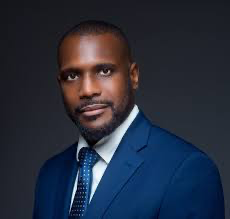Submitted by Observing


On a political platform in 2018 the then leader of opposition announced that “Common Entrance must go!” The crowd cheered.
For three years the appointed Minister pronounced ad infinitum that “Common Entrance must go!” The masses bellowed.
For the last two years this Minister (when she actually speaks) joined the choir to lustily sing that “Common Entrance must go!” The audience applauded.
And of course the 66 year old once retired Director of Reform said emphatically and conclusively in the House of Parliament that the new system would be in place by September 2022 and “Common Entrance must go!” The pundits thumped their desks.
Now here we are.
- Reimagine is the new buzzword
- Collaboration and shared ideas are the new mirrors
- Colonial mindset is the new smoke.
If the past 5 years has shown anything it’s that this government (like others in the past) aren’t serious about real, effective impactful, “ground up” education reform.
An August 2022 leaked document making the wrongs also proves if true, that while we wax poetically about what needs to be done, the core foundations of classism, elitisim, public perception, haves and have nots will remain while those with the “power” remain blind to the REAL problems facing schools and education and by extension our society that need addressing.
To be honest, it is a tough task. When you look back at EDUTECH which is at best a partial failure, you would understand why this “transformation” and “reimagining” should cause all of us to sit up and ask some pertinent questions.
- Does this process really make “all schools equal?”
- Are the challenges faced by families of 3-9 years old being addressed?
- Are the developmental, social, learning, behavioural and psychological difficulties among toddlers and pre-teens being addressed?
- Is a 4 hour exam really to blame for societal decay, family decline and socio-behaviuoral confusion in the country?
- Can people really “come along” with you if they don’t have a clue what’s happening?
- Are we addressing the REAL needs of the country at this time or the real WANTS of a few?
- Did EDUTECH prepare us for the 21st century far less a pandemic? Will this new “reimagining” do it?
- Are the thinkers, leaders, practitioners, researchers, parents and men on the street fully on board, fully involved and fully aware?
- Is this just another attempt to shape a legacy and score political points?
Whatever the answers, it is pellucidly clear to a blind man on a trotting horse that the whip was snapped this week with all schools closed and teachers/principals called to “urgent” last-minute meetings to discuss an “idea” first mooted 5 years ago, sent to Cabinet since last year and declared a fait accompli despite having no real roadmap or plan. Those who know know.
The skeleton has no meat.
The pond has no water.
The emperor has no clothes.
If there is one thing education should never do, is to raise mindless robots who do not think critically. I pray that those of us wo are not robots and even those who are (with a little AI help), will ask the relevant questions, share the pertinent thoughts and repeatedly confront and call to account those who are seeking to dismantle a system and affect at least 3-4 generations to come. My grandchildren and yours are the ones who will feel it most.
The road to hell is paved with good intentions (Saint Bernard of Clairvaux)





Leave a Reply to ArtaxCancel reply